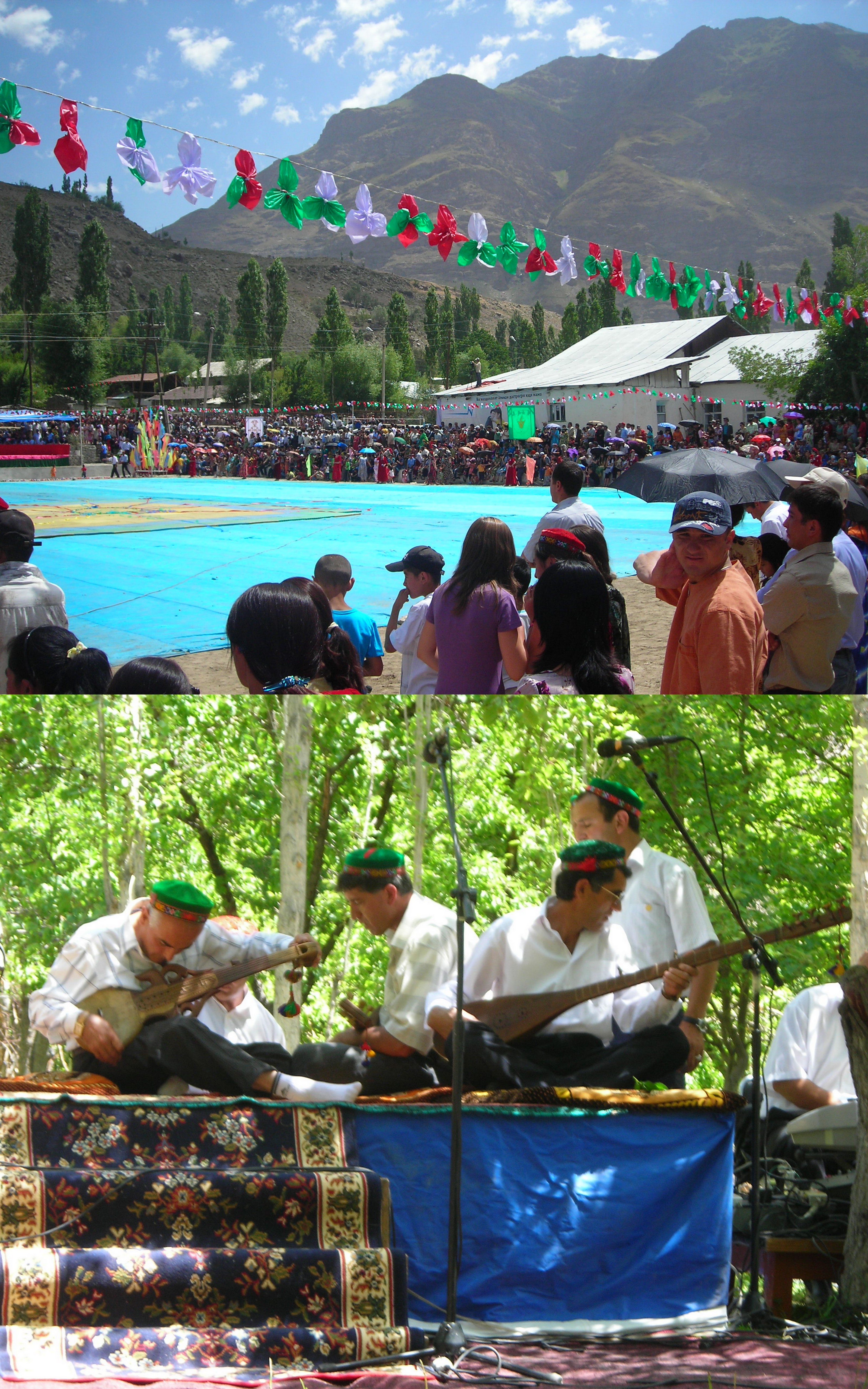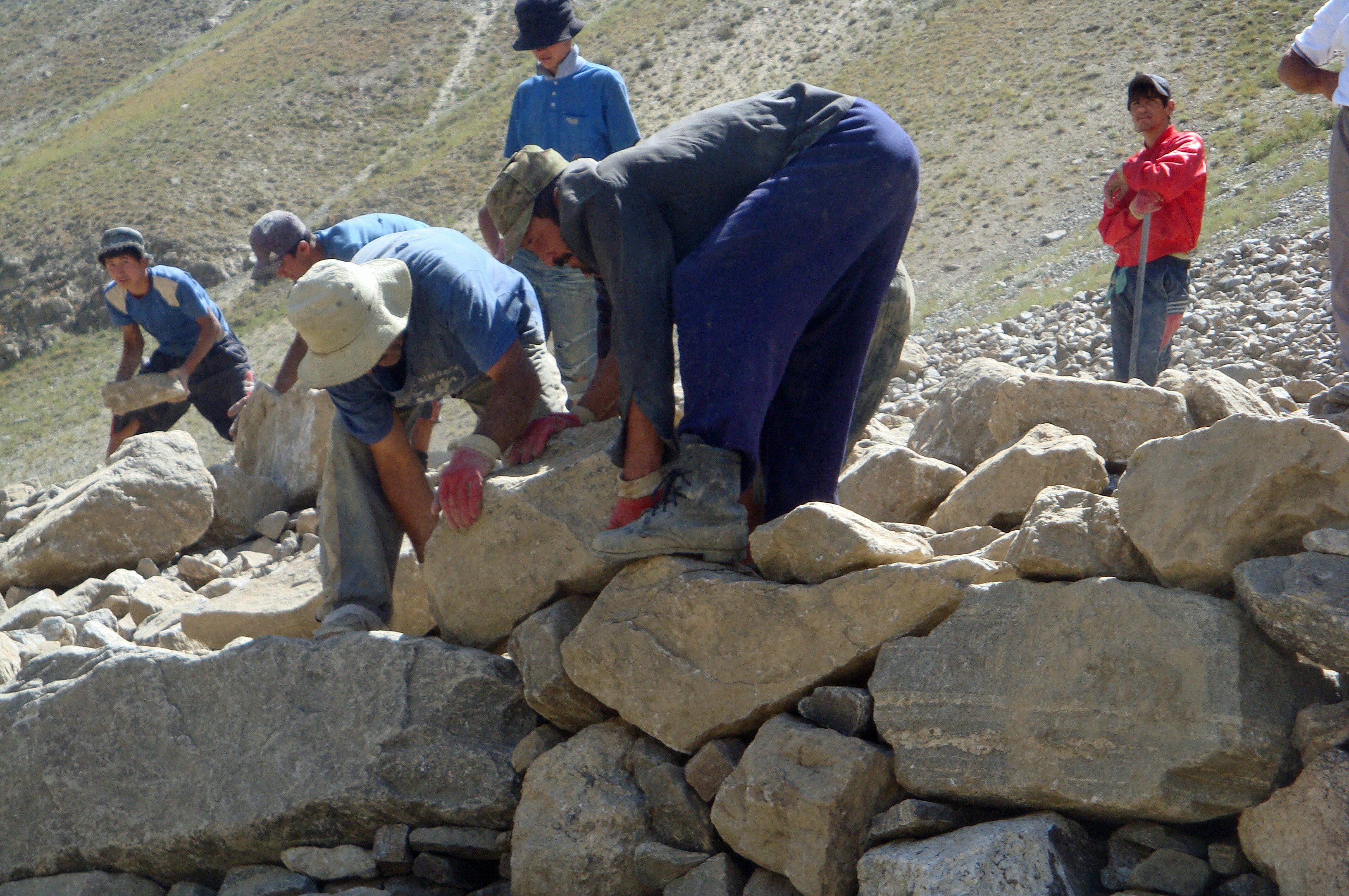
Imamat Day celebrations on 11 July 2009 included a concert featuring traditional Pamiri music. Janet Southern
Last summer, I worked as one of four interns in the offices of Focus Humanitarian Assistance (FOCUS) in Khorog, the capital of Tajikistan's Gorno-Badakhshan Autonomous Oblast (GBAO). As an Ismaili of East African background, I had little knowledge of Central Asian culture or the Nasir Khusraw tradition of the Jamat. I saw my visit as an opportunity to experience the country and to open my eyes to an ancient culture that characterises the Ismaili community in the region.
Dominated by the Pamir mountain range, GBAO is stunningly beautiful. Majestic peaks are outlined against a sky that alternates between bright blue in the day and a star-studded pitch black at night. The Pamiri family that hosted me and my fellow interns provided more than a house to live in – they made us feel at home. They spent time teaching us their local language of Shughni, invited us along when they ran errands and took us to Imamat Day celebrations. They truly integrated us into their lives and community.

FOCUS interns Nazia Gahdia and Safiyya Devraj with the interns' host family, the Mavjudalievs. Janet Southern
Family outings were common on the weekends, allowing us to practice our Shughni, learn more about the local culture, and explore the town and surrounding areas. We took day trips to neighbouring villages and local sights such as the high altitude botanical gardens – the second highest of their kind in the world. We would wander through the gardens and take in the breathtaking view of Khorog, noting the greens and browns scattered below – a patchwork of fields, crops, and buildings, with the Gunt and Panj rivers merging together. At lunch, we would sit in the shade and feast on delicious tarbouz (watermelon), guurda (round bread), and sok (juice). The hospitality of our hosts was unwavering – they made sure that we really got to experience life in GBAO.
Such kindness was not exclusive to our host family – it was demonstrated by everyone I met, including my co-workers at FOCUS. One of my supervisors took me and the other interns mountain climbing; others treated us to traditional local meals at their homes. Another invited me to her wedding festivities, even though we had only just met.

The four 2009 FOCUS Global Interns for Tajikistan pause for a photograph as they travel from Dushanbe to Khorog. (L to R: Nazia Gadhia, Safiyya Devraj, Janet Southern, and Samir Panjwani). Courtesy of Nazia Gadhia
The FOCUS interns came from different parts of the world. We each brought unique perspectives on culture and development, and pushed and challenged one another to think outside the box. As interns we often collaborated, but we also separated out to work within our respective teams.
I worked on a disaster preparedness programme that concentrated on increasing local capacity to prepare for and cope with the effects of natural disasters. Funded by the European Commission's Humanitarian Aid Office (ECHO), the programme incorporates media, education, institutional capacity building, and structural mitigation initiatives. My role was in monitoring and evaluating; I observed each component of the disaster preparedness programme to assess its successes, challenges, and overall effectiveness, and made suggestions for future improvement.
This role also permitted me to go into the field to observe a project's impact upon the local community. What I found most interesting was that entire projects were operated by the Tajiks themselves. Local professionals with backgrounds in engineering, computer science, linguistics, and law worked together to achieve the goals laid out by ECHO.

Drawing on a traditional Pamiri custom of public voluntary work known as “kiryar”, members of the community participate in the construction of a reveted wall in Khorog. Janet Southern
The wider community also took part in its implementation, connecting their participation to a traditional Pamiri custom of public voluntary work known as kiryar or hashar. The custom originally involved the building of houses for individual families by the community. Now it is being applied in different, but relevant contexts: huge groups come together to work voluntarily on structural mitigation projects – such as the reconstruction of bridges – to ensure their completion within the required timeframe.
The community's strong commitment demonstrates self-sustainability, while also spelling the achievement of development goals for the region. During one particular site visit, a reveted wall – built to slow the impact of falling debris and snow – was in its beginning stages of construction. On my return only a few days later, I was amazed to see over half the wall completed! A co-worker explained to me that kiryar played a huge part in this progress. He connected its success to the values of the Jamat, which place importance on community responsibility and achievement.
I embarked on my journey to Tajikistan expecting to see a new place and to further my professional experience. After spending almost two months living with a traditional Pamiri family, working with the local community, and catching a glimpse of the beauty and spirituality that characterises the people and landscape of this part of the world, I came away with new friends, treasured memories, a better understanding of the traditions of the Ismaili community in that part of the world, and how tradition is woven into the wider story of our culture and history.







